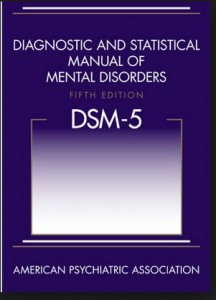The fifth edition of the Diagnostic and Statistical Manual of Mental Disorders (DSM-5) was finally released last week after several delays and an amazing amount of controversy and discussion. The book, published by the American Psychiatric Association, is commonly referred to as the psychiatric “bible” and contains the official list of psychiatric diagnoses and their criteria. The last version was published way back in 1994 with minor changes issued in a “text revision” in 2000.
Many experts have remarked on how much things have not changed in over 20 years, including through the entire 1990s “decade of the brain.” More revolutionary ideas that were floated initially, such as making disorders more dimensional rather than using a yes/no format, were eventually dismissed. Arguably the two biggest changes as they relate to child disorders is the collapse of all pervasive developmental disorders into a single Autistic Spectrum Disorder diagnosis (no more Aspergers) and the creation of a new Disruptive Mood Dysregulation Disorder to describe chronically irritable and explosive children who don’t meet strict criteria for episodes of mania (but were often being diagnosed as bipolar disorder anyway). A summary of changes to various disorders can be found here.
While it is hard to imagine how such an undertaking could be performed without triggering heated debate from many sources, DSM-5 has found a way to provoke criticism even from those you might think would be staunch supporters. The Director of the National Institute of Mental Health, Tom Insel, wrote that patients “deserve better” than a diagnostic system based on committee consensus rather than neuroscience research. His comments raised enough eyebrows to prompt a statement of solidarity with DSM-5 and the APA, claiming basically that it is the best we can do right now given our current state of knowledge. The former head of DSM-IV, Allen Frances, has also gone extremely public with his criticism of the DSM-5. Among other things, he disparaged the frequent conflicts of interest of DSM-5 committee members, although ironically did so in the promotion of two books he wrote on the subject.
Adding further confusion is exactly how the new terminology will be incorporated into our “official” language. Most medical coding systems use the classification of the International Classification of Disease (ICD) system rather than DSM anyway, so disorders can and do live in one world and not the other.
While it is worth noting that plenty of nonpsychiatric illnesses, from hypertension to migraine headaches, also rely on diagnosis by convention, the pervasive criticism coming from multiple angles may reflect an overall theme of impatience and yes, even some embarrassment that, after all the years and all the hard work, our diagnostic system has stood mostly unchanged for decades despite the widespread acknowledgement that it is fundamentally flawed.
Tags: dsm-5, dsm5, psychiatric diagnosis

